Since 1996, a Toyota Mini Van has consistently been a part of our family vehicle history. For some car enthusiasts, admitting a fondness for mini vans might be unthinkable, but I am a proud van enthusiast. I deeply respect vehicles that excel at their intended purpose, and for efficiently and economically transporting people and cargo, nothing surpasses a mini van. Reliability has always been our top priority when choosing a van, and naturally, Toyota has been our brand of choice. Over the past twenty-seven years, we’ve owned seven Toyota mini vans, spanning various models. Here’s a look at each, ranked in order of preference. Please note that the images provided are representative examples found online.
 1980 Toyota Town Ace Wagon in white, parked on a street, showcasing its boxy, early minivan design.
1980 Toyota Town Ace Wagon in white, parked on a street, showcasing its boxy, early minivan design.
1. 1980 Toyota Town Ace (Rank #7)
Our Toyota mini van journey began in 1996 while living in Okinawa. With a six and two-year-old, a van was the logical choice. Anticipating a three-year stay, we sought affordable transportation. A used car dealership near our military base offered numerous options, but the 1980 Town Ace stood out as the most budget-friendly. Despite its wear and over 120,000 kilometers, it seemed mechanically sound. For just $850, it became ours. However, after six months, a critical flaw emerged: the driver’s seat had limited rearward movement, making it cramped and uncomfortable for me. Rattles were also a constant companion. Yet, it never failed to start, a testament to Toyota’s inherent reliability even in their older models of mini vans.
Ranked last, the 1980 Town Ace, while likely decent in its prime, was simply too small and aged by the time it joined our family.
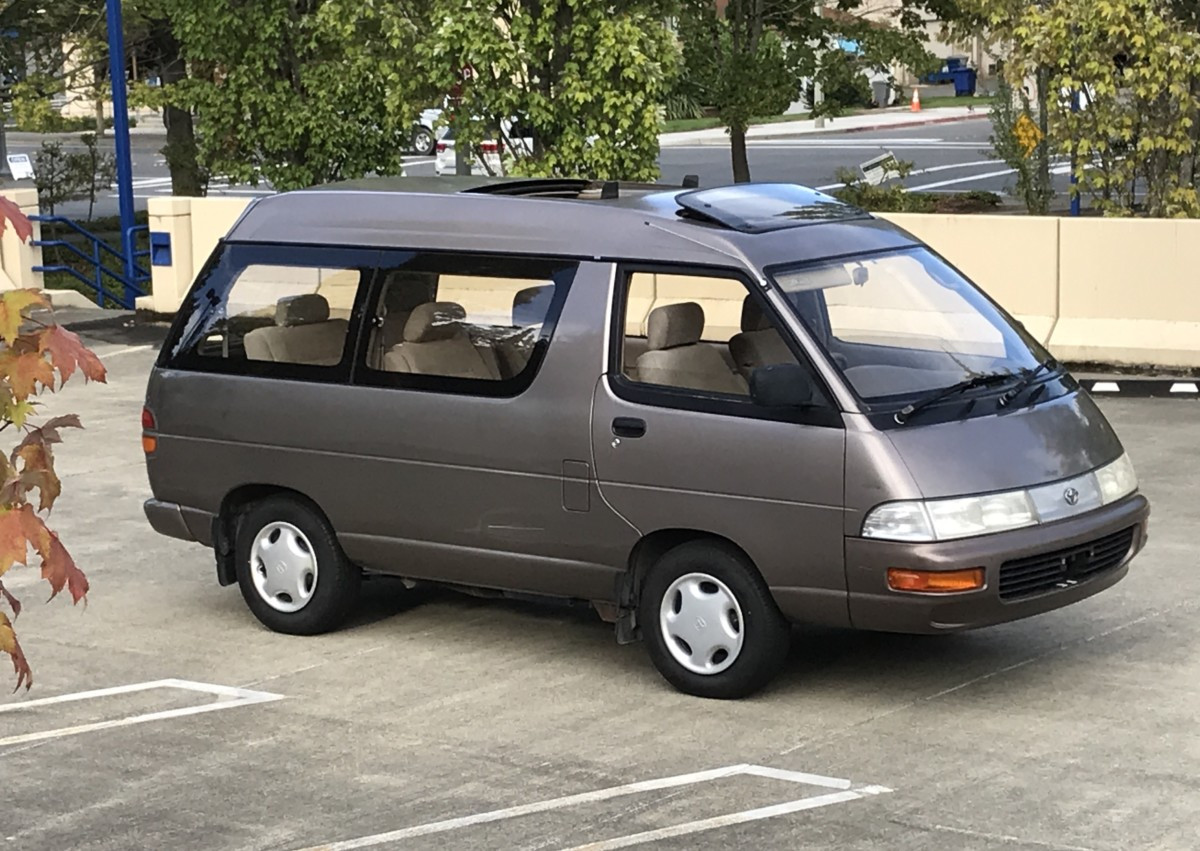 1992 Toyota Town Ace Royal Lounge in two-tone silver and gray, featuring a more refined appearance with sunroofs and aftermarket seat covers.
1992 Toyota Town Ace Royal Lounge in two-tone silver and gray, featuring a more refined appearance with sunroofs and aftermarket seat covers.
2. 1992 Toyota Town Ace Royal Lounge (Rank #2)
Returning to the same dealership, we searched for a larger and newer Toyota mini van. Fortunately, a low-mileage 1992 Town Ace Royal Lounge with only 40,000 kilometers had just arrived. It was a significant upgrade from our previous van in almost every aspect. Larger and more refined inside, it boasted a 1.8-liter fuel-injected inline-four engine paired with a 4-speed automatic transmission, a step up from the older van’s 1.6-liter carbureted engine and 3-speed auto. Rotating middle seats allowed for face-to-face rear seating, and dual sunroofs added to the spacious feel. It even included lace half-seat covers and curtains, adding a touch of Japanese domestic market (JDM) flair. The dealer took back our old van, and for an additional $2000, we drove away with the Royal Lounge. We enjoyed it for the next two and a half years, regretting its departure when we left Okinawa. However, its forward control layout and lack of substantial front crash protection were persistent concerns, creating a sense of vulnerability while driving this Toyota mini van.
Despite this safety apprehension, the 1992 Town Ace Royal Lounge earns the second spot due to its overall pleasantness and significant improvement over its predecessor.
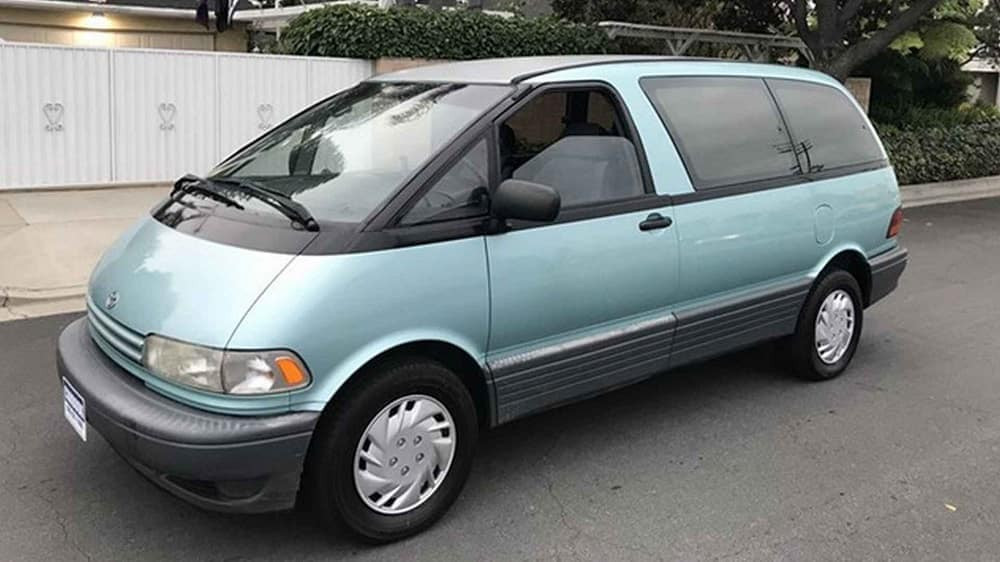 1990 Toyota Previa in light blue, showcasing its distinctive egg-shaped silhouette, parked on a paved area.
1990 Toyota Previa in light blue, showcasing its distinctive egg-shaped silhouette, parked on a paved area.
3. 1990 Toyota Previa (Rank #5)
Upon returning to the US in 1999, our search for a Toyota mini van led us directly to the nearest Toyota dealership, again seeking a used model. A base-model 1990 Previa with nearly 100,000 miles was available and in good condition. Used Previas of this generation were highly sought after and scarce, as owners tended to keep them for extended periods. Consequently, the dealer was firm on pricing. We agreed on $10,000, a sum that could have bought a newer used Chrysler Caravan/Voyager, Ford Windstar, Honda Odyssey, or Nissan Quest. True to Toyota’s reputation for reliable mini vans, this Previa served us faithfully for four years of trouble-free driving. Beyond routine maintenance, only the rear shocks at 110,000 miles and the starter at 120,000 miles required replacement.
The 1990 Previa is ranked fifth – a solid and dependable Toyota mini van that is likely still on the road somewhere.
 1996 Toyota Estima Lucida in dark green, a narrower version of the Previa, parked in front of a building, highlighting its compact dimensions.
1996 Toyota Estima Lucida in dark green, a narrower version of the Previa, parked in front of a building, highlighting its compact dimensions.
4. 1996 Toyota Estima Lucida (Rank #6)
Returning to Japan in 2003, we needed both a car and a Toyota mini van. Japan boasts numerous small used car dealerships reminiscent of 1960s America. We found one with an excellent, low-mileage 1992 Toyota Crown and a 1996 Estima Lucida. The Estima was the JDM name for the Previa, but Toyota offered two sizes in Japan: the Estima, similar to the Previa, and the Lucida/Emina, narrower by 4.3 inches and shorter by 2.8 inches. These smaller versions were designed for Japan’s narrow roads and lower tax bracket. Negotiating a favorable deal, we acquired both the Crown and the Estima for $7000. Mechanically sound, the Estima Lucida’s interior was noticeably worn. After a year, my spouse expressed a desire for something newer and more refined in our Toyota mini van.
Ranked sixth, this Estima Lucida was mechanically robust but ultimately let down by its tired interior.
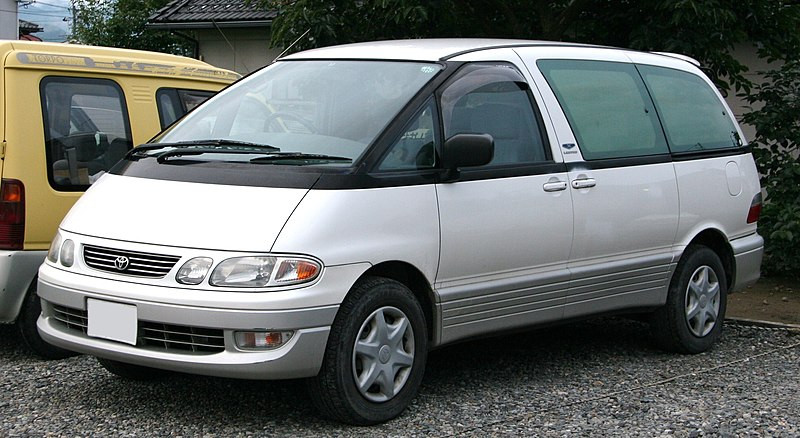 1999 Toyota Estima Lucida in white, a later model with subtle styling updates, parked on a city street, demonstrating its well-maintained condition.
1999 Toyota Estima Lucida in white, a later model with subtle styling updates, parked on a city street, demonstrating its well-maintained condition.
5. 1999 Toyota Estima Lucida (Rank #4)
Mirroring our Okinawa experience, we found a significantly nicer Estima Lucida at a larger national used car dealership in Japan. This 1999 model had fewer miles and a higher trim level. We paid $8000 and it rewarded us with eight years of trouble-free service, until my spouse again felt the urge for a newer Toyota mini van.
Ranked fourth, this Estima Lucida was another excellent van. Remarkably, I saw it in Tokyo about six months ago, still looking pristine and running smoothly, a testament to the longevity of Toyota mini vans.
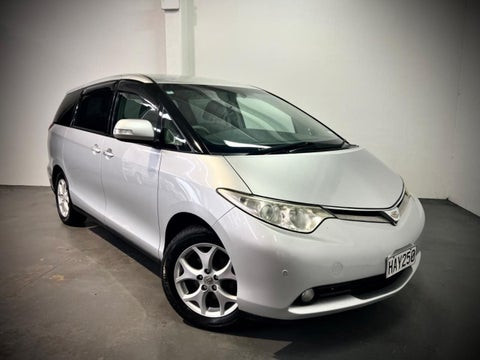 2007 Toyota Estima in silver, the sleek third-generation model, parked in a well-lit area, highlighting its modern and aerodynamic design.
2007 Toyota Estima in silver, the sleek third-generation model, parked in a well-lit area, highlighting its modern and aerodynamic design.
6. 2007 Toyota Estima (Rank #1)
While I’ve always appreciated the rounded aesthetic of the Previa/Estima, the third-generation Estima was, in my opinion, a design triumph. Exceptionally sleek, a rare compliment for a mini van. Beyond its styling, two aspects stood out: 1) the interior was a significant leap forward from the previous generations, approaching Lexus-level quality, and 2) it featured the 2GR-FE 3.5-liter V6 engine, producing 270 horsepower and 260 lb-ft of torque. For the first time, my wife’s vehicle was faster than mine. It provided another eight years of faultless driving. Why did I eventually sell this pinnacle of Toyota mini vans? Unfortunately, my spouse misjudged a parking lot exit in downtown Tokyo, causing a substantial crease along the side, from the front quarter panel to the rear, with some tears. The repair costs were prohibitively expensive.
The 2007 Estima earns the top rank as the absolute highlight of our Toyota mini van ownership.
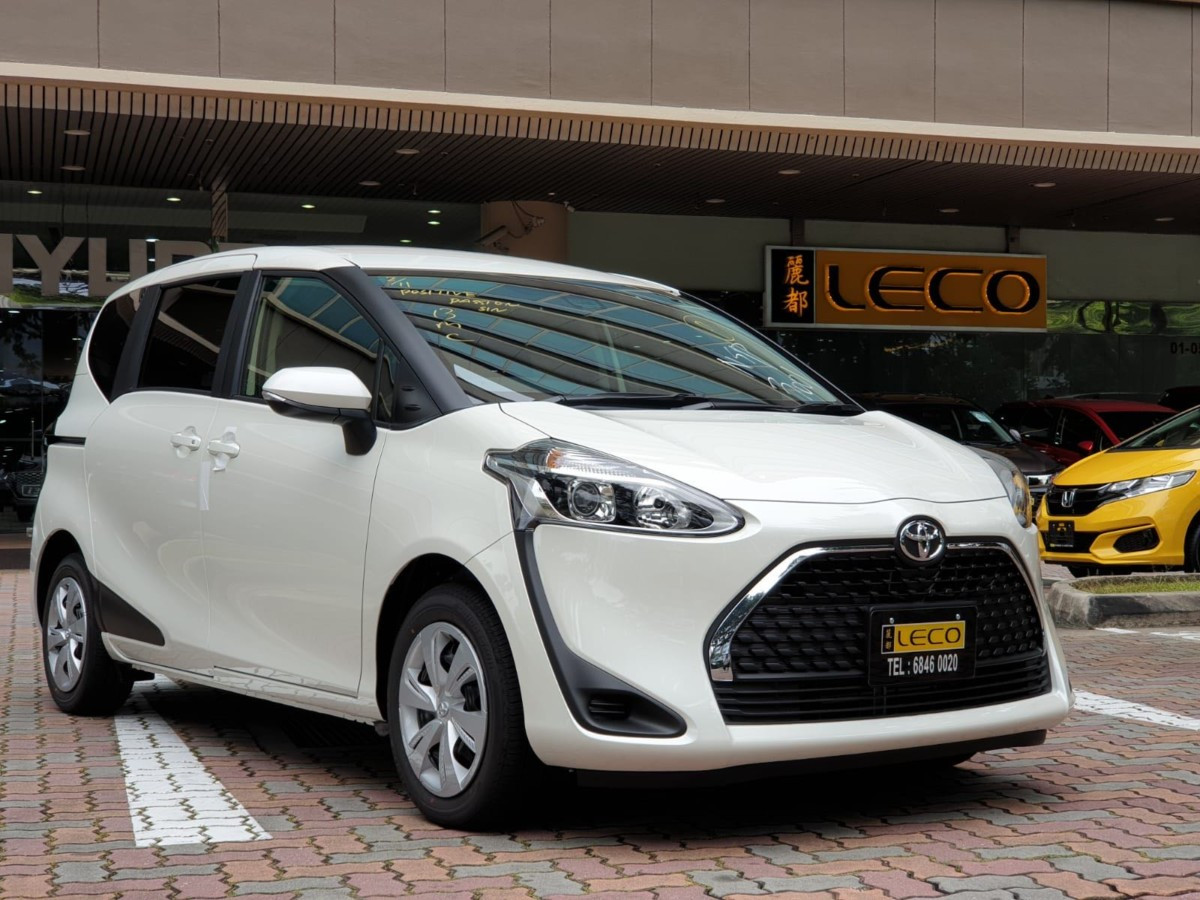 2017 Toyota Sienta in bright green and black two-tone, a compact and uniquely styled minivan, parked in a showroom, showcasing its modern and space-efficient design.
2017 Toyota Sienta in bright green and black two-tone, a compact and uniquely styled minivan, parked in a showroom, showcasing its modern and space-efficient design.
7. 2017 Toyota Sienta (Rank #3)
By 2020, with our children grown and moved out, our needs shifted to assisting my wife’s elderly parents, one of whom uses a wheelchair. A Toyota mini van remained the preferred vehicle type. Replacing the Estima, we sought a smaller, more manageable size and chose Toyota’s smallest JDM three-row seven-passenger van – the Sienta. We found a well-maintained, low-mileage example at a Toyota dealer. It suits my wife and her parents well but feels somewhat cramped for me. Its space utilization is undeniably innovative; the third-row seats fold completely beneath the second row, creating a flat load floor. The 1.5-liter 2NR-FKE engine is also noteworthy, employing Toyota’s Variable Valve Timing – Intelligent system, enabling Atkinson cycle operation and a high 13.5:1 compression ratio for enhanced efficiency in this Toyota mini van.
The 2017 Sienta ranks third – very practical and space-efficient, but a tad too small for my taller frame. The front-end styling is also not my favorite aspect of this otherwise excellent Toyota mini van.
Summary
It remains somewhat surreal that someone who once coveted 428 Cobra Jet Mustangs in his youth has spent 27 years driving boxy, Japanese-made “mommy-mobiles”. Life indeed takes unexpected turns. However, these Toyota mini vans have consistently served my family admirably. None ever failed to start or left us stranded. Even the 1990 Previa provided advance warning of needed repairs, allowing for proactive replacement. Each one has earned my sincere respect, and a couple even sparked a bit of genuine enthusiasm. Toyota mini vans have proven to be reliable, practical, and enduring family vehicles.